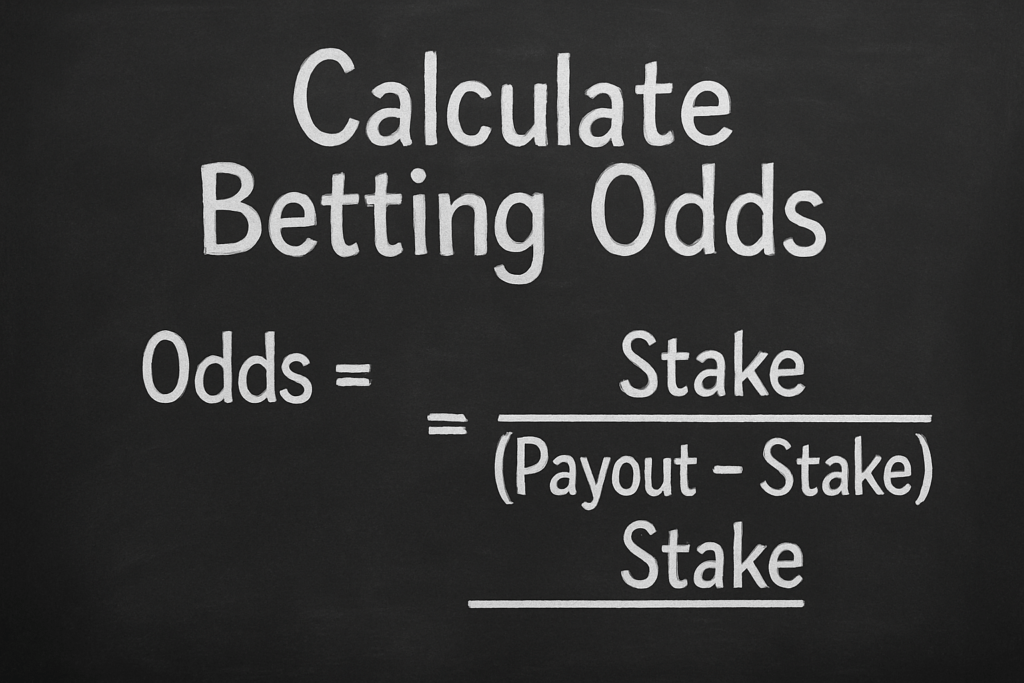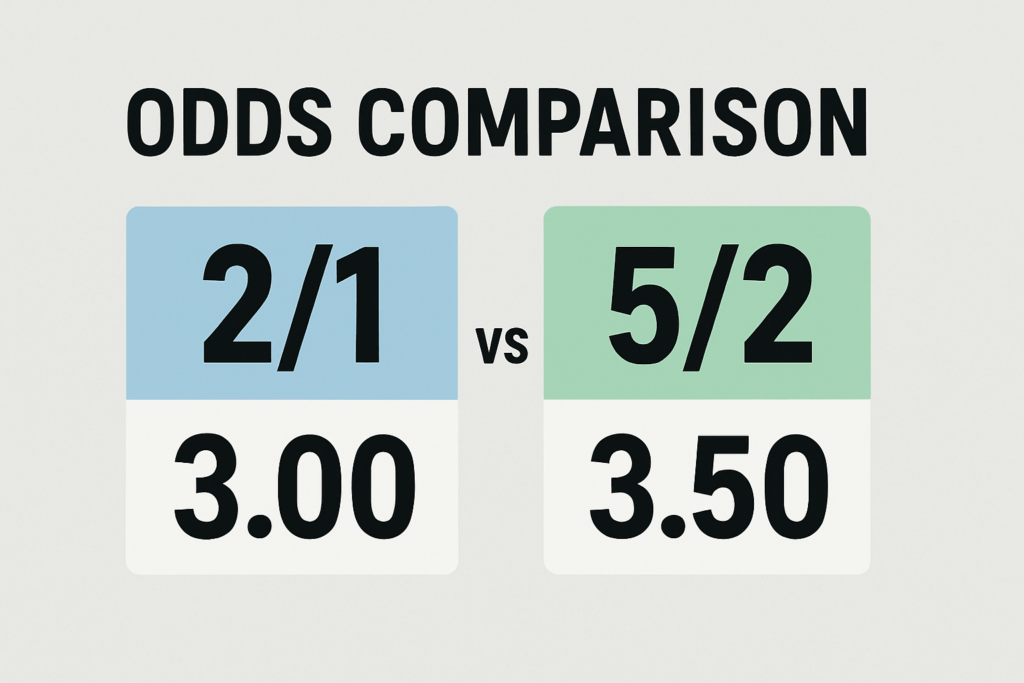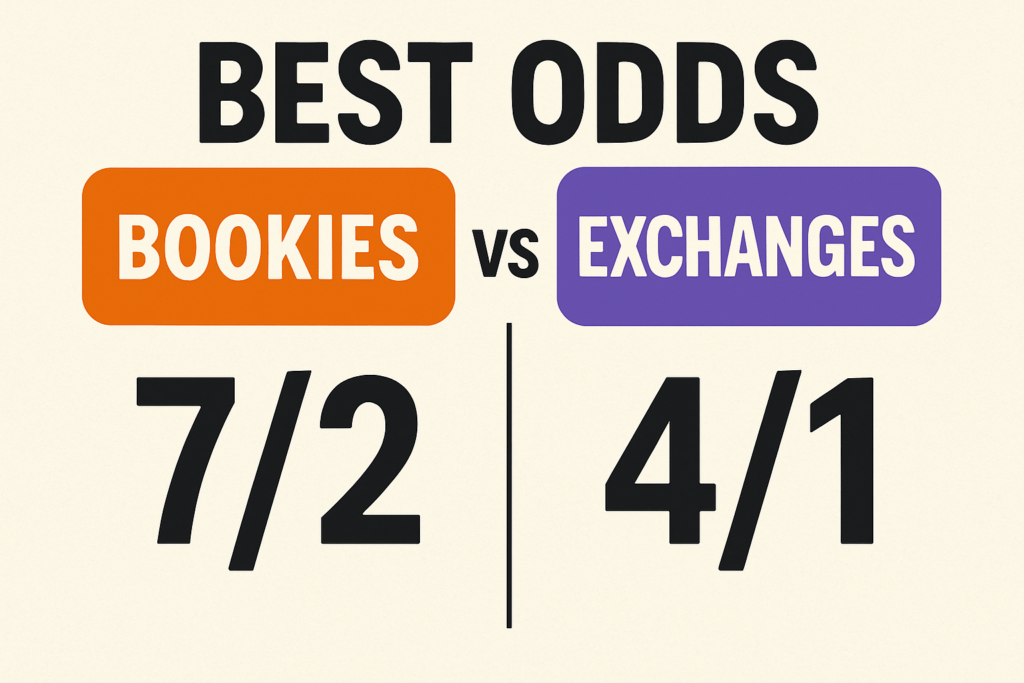How to Calculate and Interpret Betting Odds: A No-Nonsense Guide
Get to the bottom of odds—fast. Whether you’re new to betting or want to sharpen up your skills, understanding how to calculate betting odds can make or break your game. This award-winning article breaks it all down, minus the fluff.
How to Calculate and Interpret Betting Odds: A No-Nonsense Guide
Let’s cut right to it. Betting odds look complicated, but they all boil down to one thing: understanding risk and reward. Whether you’re in a pub with mates or scrolling through an online sportsbook, if you can calculate betting odds, you immediately know both your possible payout and your chance of winning.
First, know this: there isn’t a secret code. Odds get packaged three main ways—decimal (2.50), fractional (5/2), and moneyline (+300 or -150). Each says the same thing in a different accent. Learning their math is less duelling algorithms, more basic arithmetic.
What you need to remember:
- Decimal odds: Multiply your stake by the number. Bet $10 at 2.50 odds, you get $25 back—$15 profit. It’s the cleanest for quick math.
- Fractional odds: Shows profit, not total return. Bet $2 at 5/2 odds? You pocket $5 profit (plus your original $2 back for $7 total).
- Moneyline odds: Positives (+) tell you profit on $100 bets. +300 means you win $300 profit on a $100 bet. Negatives (–) tell you how much you need to bet to make $100 profit. –150 means you must put $150 down to net $100 profit.
Why bother? Because knowing how to calculate betting odds gives you control. You’ll sidestep wild guesses and understand exactly what you stand to gain—or lose—every time you put your money down. No fancy jargon, no smoke and mirrors. Just fast, clear numbers shaping every bet you make.
The Basics: What Are Betting Odds?
Let’s cut straight to it. Betting odds are just numbers. They don’t have magic powers, they’re not psychic—they simply tell you two things: how likely something is to happen, and how much you’ll get if you bet on it and win. Odds are the backbone of every wager. Whether you’re eyeballing the Super Bowl or a local horse race, odds answer two questions: “What are my chances?” and “What’s my reward?”
Here’s all you need to know up front:
- Odds = Probability + Payout. If the odds are low, the event is more likely, but the payout is smaller. High odds mean it’s unlikely, but you could win big.
- You’ll see odds written in a few ways: decimals (like 2.40), fractions (like 7/4), and moneyline (like +180 or –200). Don’t let the formats throw you—underneath, they’re all doing the same math, just wearing different uniforms.
- Before you put down your money, always pause. Ask: “What are these odds telling me? How risky is this? How much do I actually stand to win?”
Forget superstition. Odds just measure risk versus reward. Learn to read them and you’ll skip the rookie mistakes most people make on bet one.
Understanding Odds Tables
Odds tables do the heavy lifting for you. Instead of running calculations in your head, you get a grid or list that instantly shows the odds for every outcome: win, lose, draw, player scores, horse places—you name it. Understanding odds tables means you don’t waste time. Just scan the column or row, and compare numbers side by side. Higher odds? That’s a bigger payout, but usually a longer shot. Lower odds? Safer pick, but less money if you win.
Here’s the straight talk: odds tables are meant for speed. You want the value bet? Look for odds that jump out—significantly higher than the rest, but still within reason. Get used to reading across different formats. Decimal odds, fractional, moneyline—they might look different, but the best tables show them in parallel, so you can size up every option in about three seconds.
Bookmark this: understanding odds tables is the fastest shortcut to smarter bets and quicker decisions. Don’t overthink it—scan, compare, move. The table’s there to keep things simple. Use it.
Types of Odds and How to Read Them
Let’s keep this simple. Odds come in three main flavors: decimal, fractional, and moneyline. Each shows you pretty much the same thing—just in different languages. If you want to read a sportsbook at a glance, you need to crack the code.
1. Decimal Odds (e.g., 2.50)
These are the most straightforward. Found everywhere except the U.S. and U.K. To figure out your total payout, just multiply your bet by the decimal odds. Example: You bet $20 at odds of 2.50. You get $50 back if you win—$20 stake plus $30 profit. No crazy math, no hidden terms.
2. Fractional Odds (e.g., 5/2)
This is the classic U.K. style—the stuff of horse races and barroom bets. The numbers show profit compared to your stake. So 5/2 (“five to two”) means you win $5 for every $2 you put down. Bet $20? You pocket $50 profit, plus get your stake back, so $70 total.
3. Moneyline Odds (+300 or –150)
America goes its own way. Moneyline odds can look weird, but they’re easy once you know the trick. Positive numbers (like +300) show how much profit you make if you bet $100—so a $100 bet at +300 wins you $300. Negative numbers (like –150) tell you how much you need to bet to win $100. If it’s –150, you have to risk $150 to win $100.
Bottom line: No style is “harder”—they’re just different ways of showing risk and reward. Learn to read these three, and you can compare odds anywhere, anytime.
1. Decimal Odds (e.g., 2.50)
Here’s the cleanest way to look at it: decimal odds tell you the total return for every dollar (or unit) bet, including your original stake. If the odds are 2.50 and you bet $10, your potential return is $25. Simple multiplication—no convoluted math.
Most of Europe, Canada, and Australia uses decimals. The number you see is what you get back for each unit, all in. 2.00 means double your money. Numbers less than 2.00 are favorites (less risk, less reward). The higher the decimal, the bigger the underdog—and the bigger the potential payday.
Decimal odds are fast. See 1.80? Bet $50, get $90 back if you win. That’s $40 profit plus your $50 stake. Just multiply and move on. No need to work backwards or remember weird ratios. When you want to keep betting straightforward and efficient, decimals are your go-to.
2. Fractional Odds (e.g., 5/2)
Fractional odds are classic British style. You’ll see them at UK bookies, horse tracks, and plenty of old-school pub bets. They’re written like this: 5/2, 10/1, 4/5, etc.
Here’s the straight talk: the number on the left (5) is what you win. The number on the right (2) is what you need to risk. So, 5/2 means you win $5 profit for every $2 you bet. If you put down $10 on 5/2 and you win, you pocket $25 in profit (that’s 10 × [5 ÷ 2]), plus your original stake back ($35 total returned).
Lower fractions mean a safer bet but smaller payout. If you see 1/4 odds, it’s telling you the horse is a strong favorite—you need to risk $4 to win $1 profit. On the flip side, odds like 33/1 are longshots. High profit if it comes in, but don’t hold your breath.
In short: first number = profit, second number = your stake. That’s all there is to it.
3. Moneyline Odds (+300 or –150)
This is the American way. Moneyline odds use plus and minus signs to show what’s on the line. If you see a positive number, like +300, it tells you how much cash you could win if you bet $100—here, that’s $300 profit, plus your stake back. If the number is negative, say –150, that’s how much you have to wager to make $100 profit. So, bet $150 to win $100. Simple as that. In short:
- +Odds = Underdog. More risk, more reward.
- –Odds = Favorite. Safer, but puts more at risk for smaller gains.
Moneyline takes a bit to get used to, but once you remember which sign means what, you’re golden.
How to Calculate Betting Odds: Quick Math
You don’t need a PhD to calculate betting odds. Here’s how you break it down, fast and straight.
- Decimal Odds: This is as simple as it gets. Take your stake and multiply by the decimal odds. That’s your total return (including your original bet).
- Example:
- Bet: $10
- Odds: 2.00
- Calculation: $10 × 2.00 = $20.
- Outcome: $10 profit (since your $10 bet is part of the return).
- Example:
- Fractional Odds: These look tricky, but really it’s just division—think “profit to stake.” Multiply your bet by the fraction. That’s your profit.
- Example:
- Bet: $10
- Odds: 5/2
- Calculation: $10 × (5 ÷ 2) = $25 profit.
- Total Return: $35 (profit plus original stake).
- Example:
- Moneyline Odds:
- Positive (+): Shows profit on a $100 bet. To calculate your win:
- Formula: Bet × (odds / 100) = Profit
- Example: $50 × (150 / 100) = $75 profit
- Total return: $125 ($75 profit + $50 stake)
- Negative (–): Shows how much you have to bet to win $100.
- Formula: 100 × (100 / |odds|) = Stake needed
- Example: Odds of –200
- You need to bet $200 to win $100.
- Positive (+): Shows profit on a $100 bet. To calculate your win:
Want to skip math on the fly? There are calculators online, but knowing these simple ways to calculate betting odds gives you power and speed. If you want more insight into beating the bookies, see our Bookies vs Exchanges: Finding the Best Odds guide.
No frills, just the formulas. That’s all you need to crunch those numbers and size up any bet—fast.
Interpreting Numeric Betting: What the Numbers Mean
Let’s cut to it. Odds are more than just paydays—they’re math in disguise, giving you clues about how likely something is to happen. Interpreting numeric betting is mostly about probability. Here’s how you break it down:
Take decimal odds (easy example: 2.00). The formula for implied probability is simple: 1 divided by your decimal odds, then multiply by 100. So, 1/2.00 = 0.5 → 0.5 × 100 = 50%. That means the bookie thinks there’s a 50% chance you’ll win.
Lower odds? The event’s more likely but your winnings shrink. Higher odds mean a bigger payout, but the chance is slim. Fractional and moneyline odds work the same in spirit—the smaller the potential profit, the more likely the result (according to the bookies). The numbers always tell a story. Don’t just look at what you could win—look at what the odds say about the actual chance.
Bottom line: interpreting numeric betting is all about seeing past the dollar signs, and spotting what’s really likely (or not) to happen. If you get the hang of implied probability, you’ll never look at an odds table the same way again.
Odds Calculation Guide: Boost Your Betting IQ
Let’s keep it simple: an odds calculation guide isn’t just for number geeks. It’s for anyone who wants to outsmart crowded betting markets. Here’s how to actually use it.
Compare Odds Across Platforms
Don’t get stuck with the first set of odds you see. Drop into a few sportsbooks or exchanges. Odds will vary—and sometimes by a lot. Finding the best number, even if it looks like a tiny difference, adds up over time.
Use Tables and Shortcuts
Seeing odds in a table makes comparison easy. Example:
| Outcome | Bookie A (Decimal) | Bookie B (Decimal) |
|---|---|---|
| Team X | 2.10 | 2.25 |
| Team Y | 1.75 | 1.67 |
A quick scan shows Team X is better value at Bookie B.
Shortcut: When decimal odds are over 2.00, your possible payout is always more than your stake. Under 2.00? You’re the favorite, but profit is slimmer.
Practice Converting Odds
The sharpest bettors know how to switch between fractional, decimal, and moneyline odds in seconds. Try it yourself:
- Decimal 2.50 = Fractional 6/4 = Moneyline +150
- Fractional 4/5 = Decimal 1.80 = Moneyline –125
Find Value, Not Just Winners
The real pro move? Always hunt for odds that offer a bigger payout than the true probability suggests. This is called finding “value.” Your new odds calculation guide skills help spot it—so always do the math, even if it seems tedious.
Bottom line: Practice reading tables, run the numbers, compare everywhere, and you’ll squeeze more out of every bet. Simple. Smart. Effective.
Learn More: Resources for Smarter Betting
No shame in looking for an edge. If you want to move past the basics and get a full overview, The Athletic’s guide to betting odds is a solid starting point—clear breakdowns, practical examples, and all the details you won’t find in your average sportsbook FAQ.
Don’t overlook forums, odds calculators, or podcasts—find what clicks. Stay curious, keep it simple, and always remember: only bet what you can afford to lose. That’s the smartest move of all.
Bottom Line
Knowing how to calculate betting odds puts you ahead of the pack. Use what you’ve learned, keep it simple, and make each bet a smarter one.



